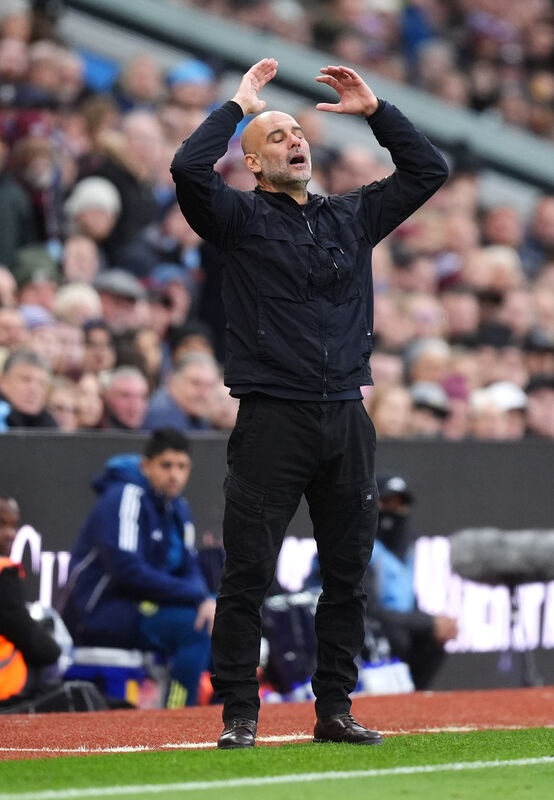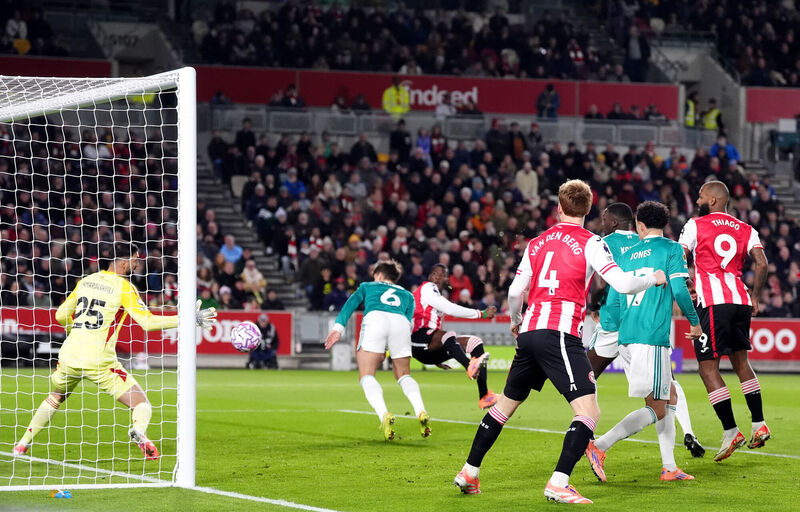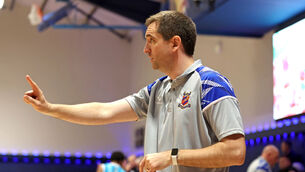Premier League: Set-pieces makes an impactful return to the game

Arsenal's Eberechi Eze (centre) scores the side's winner from a set-piece free-kick during the Premier League match against Crystal palace at Emirates Stadium, London.
Mikel Arteta’s Arsenal travel to Burnley this afternoon knowing that a win will put them seven points clear of the pack and in a very healthy position, to such a degree, that many pundits already see the Premier League title is theirs to lose.
After years of frustration, the Gunners look in better shape to claim that elusive crown. And many are crediting the change in fortune to their ability to make the most of set-piece plays to score their goals.
The Gunners have scored 69% of their 16 goals from set-pieces. That amounts to 11 goals from dead ball positions, which is two more than the next nearest side, Chelsea on nine.
Success at scoring is welcome at a club no matter where it comes from but some pundits and ‘football purists’ have decried the move towards the set piece as a backward step in the evolution of the game, that in the past decade or more has elevated high-tempo, high-press, possession football as the only way to play the game. And to be fair, with some justification when you look at the styles of the most successful sides across Europe.
But this season (at least in the Premier League) there seems to be a trend to move towards picking off a few goals from dead balls with 11% of this season’s goals coming from corners alone. With Arsenal, in particular, being very effective from the corner flag, and defender Gabriel especially influential from the dead ball.

The resurgence of set-piece plays was noted by Pep Guardiola, whose Man City side went down 1-0 to Aston Villa last weekend to a tasty short corner set-piece play scored by Matty Cash. Guardiola noting that corner set-pieces and long throw-ins are becoming an ever more important tactic in Premier League this season.
The Catalan has suggested that the league has become more direct and its emphasis on set-pieces like they were “inspired by Tony Pulis’s Stoke side of the late 2000s”. Which successfully defied the odds against bigger clubs until the tactic was effectively sidelined with the introduction of the more possession style philosophy of football, ironically pioneered by Pep and his cohorts in Barcelona in the early 2000s. “I remember when I was at Barcelona and Bayern Munich, Arsene Wenger talked about going to play at Stoke City but now it happens a lot of times,” Guardiola noted.
Of course, Guardiola is not prepared to give up on the principles and tactics that brought him so much success. But maybe we are at a point where the tactics he was so instrumental in disrupting is coming back to discombobulate the mighty Pep. And maybe ruffle a few others.

Liverpool, a fellow proponent of the possession game, have conceded seven league goals from set-pieces half their total conceded this season so far. And it’s clear that they are uncomfortable dealing with frees, corners, and especially long throw-ins as was witnessed in last Saturday's defeat at Brentford.
The champions are only behind the really struggling Forest and West Ham for most conceded set-piece goals. Maybe giving an indication to why Liverpool are struggling so hard this season.
Brentford’s long throw-ins had Liverpool’s much vaunted defence in a tizzy with every throw into the box. The Bees only needed five minutes to get their first goal from the confusion created around Michael Kayode’s long flat throw in for Dango Ouattara to pounce for the score, amid Liverpool’s utter confusion to deal with the situation.
It is a tried-and-trusted tactic that has worked for Brentford from even before Keith Andrews’ tenure. The Bees have scored nine league goals from long throw-ins from the start of last season. And its effectiveness is shown by the list of sides that do the most long-throws to the box. Led by Brentford, of course, but closely followed by Crystal Palace, Sunderland and second-placed Bournemouth proving the benefits of using the play. We may also see all three newly promoted teams, Sunderland, Burnley, and Leeds use set-pieces to such a good effect that we may have the first season in a long time when all three promoted sides could survive the drop back down to the Championship.
But there are some genuine concerns that and over reliance on set-pieces dramatically slows play down. Evidenced in the Brentford-Liverpool game, where the Bees long throw-in routines took 9.8 minutes to complete. A major delay on the run of play. In a league renowned worldwide for it fast-paced turnaround, any moves to slow the game might take from its attractiveness and effectiveness.
But against all that, who can argue against any tactic if it works for a side. The records don’t have asterisk next to a champion that won the title by *set-piece. If the tactic works for you and you win, go for it. The status quo in tic-tac/high press football may have got too comfortable in its success and has forgotten how to deal with the rudimentary skills and practices of the game. In the final analysis they will have to adapt to any trend within the game and if they are as skilful and as good as they think they are, they will find a way to counteract it or, heaven forbid, take on the set-piece themselves.







 App?
App?







